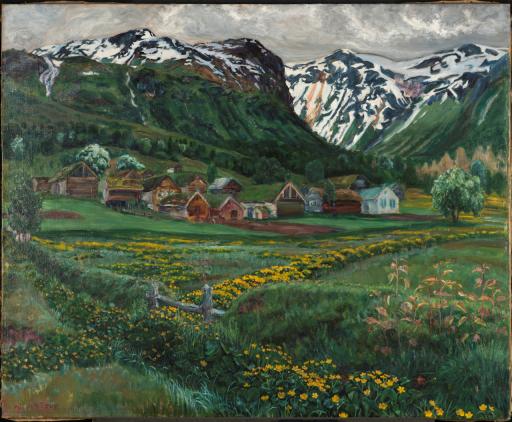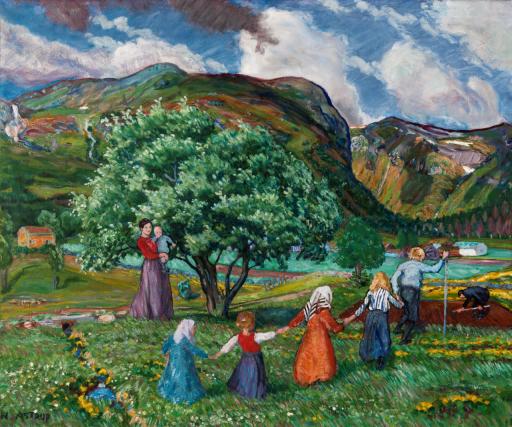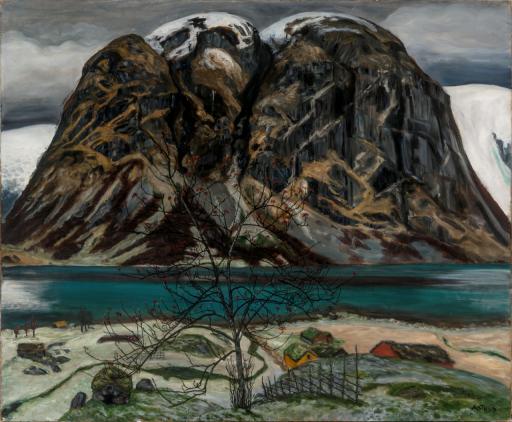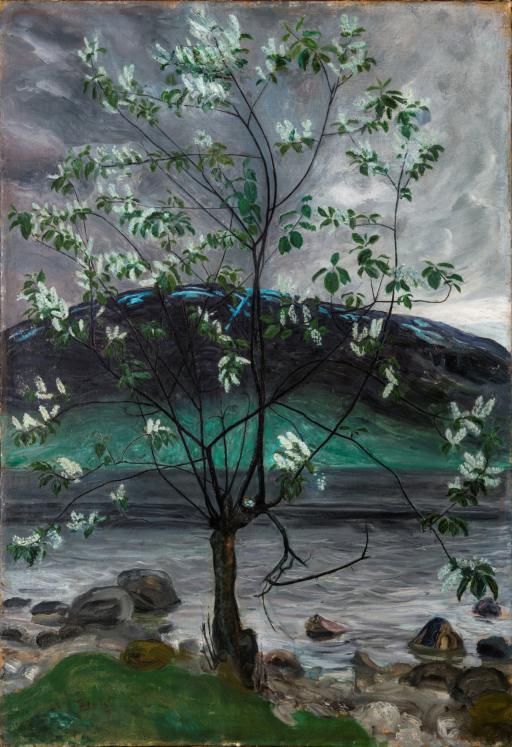The 1914 “Jubilee Exhibition” in Frogner commemorated the centennial of the Constitution of the Kingdom of Norway (1814-1914). Based on the model of the World Fairs, the exhibition aimed to present the scope of the distinctive Norwegian character. The various exhibitions ranged from art to industrial art, from forestry to the production of margarine, from the lives of Norwegian-Americans to the Lapp culture, and from rural life to urban life.
The jury for “The Art Section” was selected by the artists Søren Onsager, Eilif Peterssen, Henrik Lund and Harriet Backer, with Christian Krohg as chairman. The exhibition hall for artworks, measuring 2100 m2, had a skylight which was covered by a thin canvas to subdue the light, walls coloured a soft grey, while the floor was covered with grey-green carpets. The hall was divided into six sections: the historic and modern sections, as well as sections for sculpture, graphic art, architecture, and decorative and applied art. Parallel to the official art section, the two artist groups, the Lysaker Circle and the Matisse students, presented a shared pavilion under the title “The 14”.
Astrup was represented with three paintings (four in the second show) in “The Young Artists Room” in the modern painting section. In the first show Astrup was presented alongside the landscape painter Harald Sohlberg, while his pictures in the second show were placed between the Italian cityscapes of Anders Svarstad and a number of nudes by Søren Onsager. Based on the first show, the critic Jappe Nilssen wrote the following about the works by Astrup that he believed were most representative of his oeuvre: “[...] lush and strong, superb in their colouration. They convey the luscious West Norwegian nature better than anything. In one area he is unparalleled. He is familiar with the landscape’s tones and its atmosphere”.
References
Nilssen, Jappe. «Kunsten paa jubilæumsudstillingen. Fra de unges sal.». Aftenposten, 1914–05–10.




